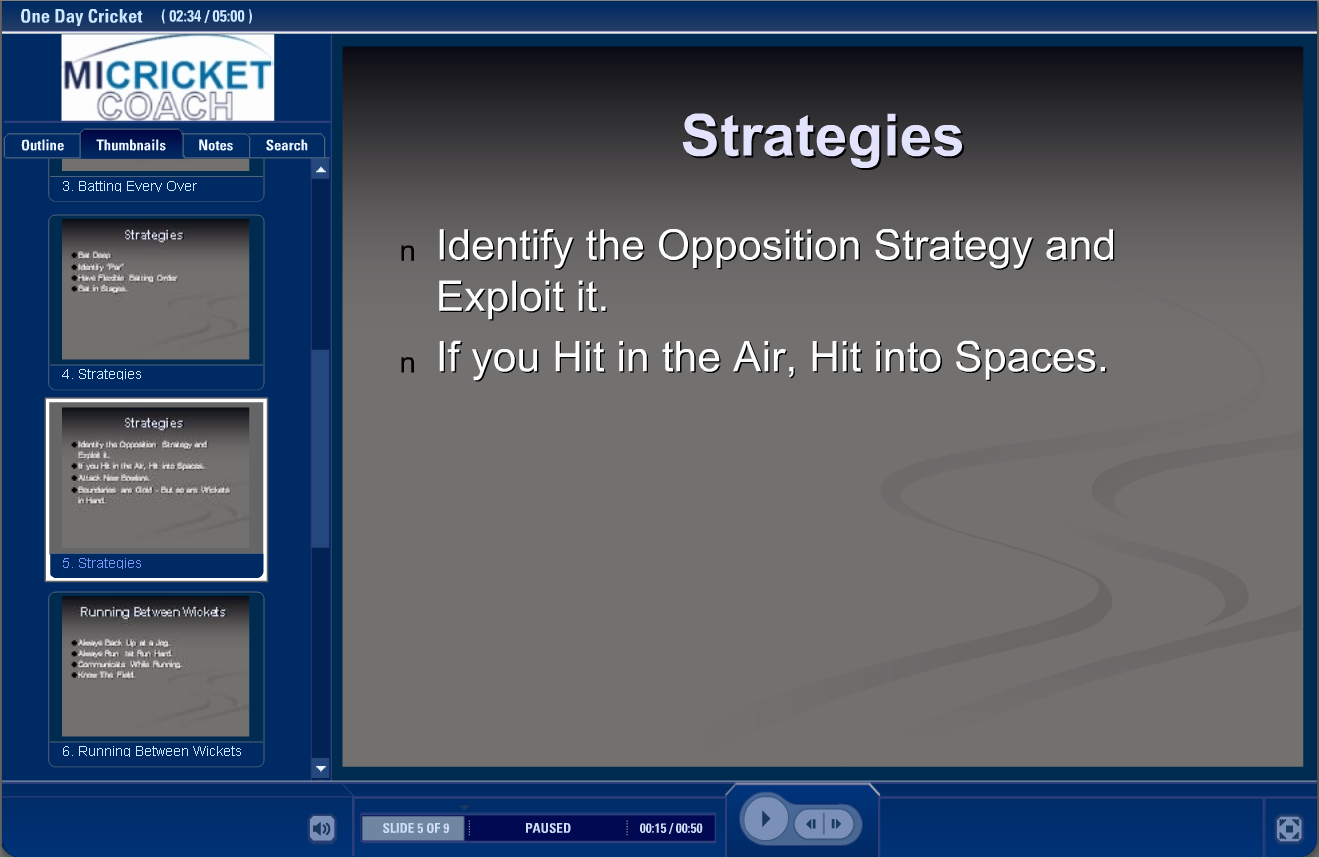How to force the batsman into a mistake against inswing
Picture the scene. You are in the field after posting a big score. The opposition look in little danger of being bowled out on a good batting track.
You need wickets to prevent the draw but all the usual ploys are failing.
It's time to get creative; It's time to force the batsman into an error.
Avoiding the Pietersen folly: Shot selection against spin bowling
The biggest talking point from day one of the 2009 Ashes was Kevin Pietersen's horrible shot selection to get out when well set. This pdf file from The Times explains the shot in all its gory detail.
If such a fine batsman as Pietersen makes mistakes like this, what chance does everyone else have to get it right? The answer is: More chance that you might think.
Control momentum by changing the pace of the game
'Momentum' is hard to define in cricket, but you know when you have it: That feeling of being on top of the game.
Smart players and coaches know how to control momentum: to be in charge of the flow and pace of the game. They understand when to ride this wave of success. They also know when to take action to get it back if it starts to slip away.
How to bowl in Twenty20 cricket: Spin bowling
Spinners have found a renaissance in the Twenty20 game. The slower pace and wider potential for variety makes the ball harder to hit.
However, when a spinner does come on, many batsmen decide it's time to go for the big hits.
What tactics can you use as a spinner to limit the damage someone can do?
Should the worst batsman be at number 11?
The worst batsman in the team is placed last in the order. Why would anyone do anything different?
I think there are circumstances where you would consider putting a better batsman at 11, and the chance to do so happens more often than you might think.
How to bowl in Twenty20 cricket: Pace bowling
Twenty20 bowling is about limiting scoring by stopping the batsman playing his best shots.
Unlike longer formats this is not done through bowling a predictable line and length. This approach simply gives the batsman the chance to play his premeditated shots or free her arms and hit you all over the park. The solution is to have a range of different lines, lengths and angles combined with changes of pace.
World Twenty20 Lessons: Group Stages
 As I write this the group stages of the World Twenty20 2009 have just finished. What lessons can club players take from the tournament so far?
As I write this the group stages of the World Twenty20 2009 have just finished. What lessons can club players take from the tournament so far?
It's certainly been dramatic: The last ball thrilling opener, Australia crashing out, amazing batting and spinner's domination. Among the chaos of six hitting and stumps flying there have been some lessons all cricketers who play the shorter format to follow.
Improve your Twenty20 tactics in 5 minutes
How to select a winning club cricket team
A good cricket team is made up of different personalities and skills. Helping make the right blend of these elements starts with the captain and the team he or she selects.
Selection at club or school level is different from the top tiers. There is very little concern about picking the extra batsman and the like. In fact for many captains the only selection issue is whether you can raise 10 other players!
How to take wickets by staying in the game
There are basically two ways to bowl a cricket ball.
The first is trying for the 'magic' ball. Perhaps it's the yorker that swings in fast and late, or the off spinner that drifts away before turning and bouncing. They are unplayable and make the batsman look helpless against your superior skills.


